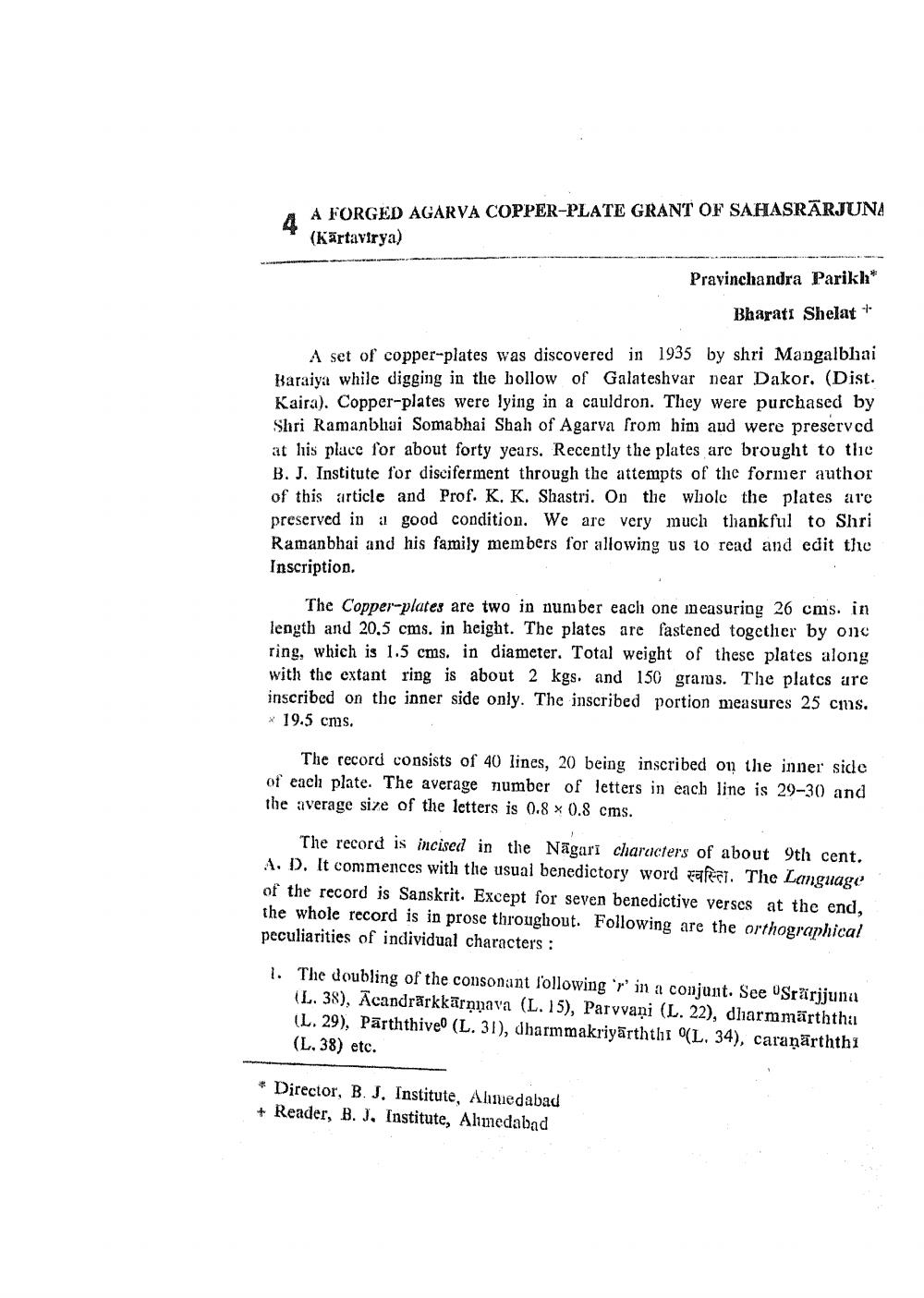________________
A FORGED AGARVA COPPER-PLATE GRANT OF SAHASRARJUNA (Kärtavirya)
Pravinchandra Parikh*
Bharati Shelat +
A set of copper-plates was discovered in 1935 by shri Mangalbhai Baraiya while digging in the hollow of Galateshvar near Dakor. (Dist. Kaira). Copper-plates were lying in a cauldron. They were purchased by Shri Ramanbhai Somabhai Shah of Agarva from him and were preserved at his place for about forty years. Recently the plates are brought to the B. J. Institute for disciferment through the attempts of the former author of this article and Prof. K. K. Shastri. On the whole the plates are preserved in a good condition. We are very much thankful to Shri Ramanbhai and his family members for allowing us to read and edit the Inscription.
The Copper-plates are two in number each one measuring 26 cms. in length and 20,5 cms. in height. The plates are fastened together by one ring, which is 1.5 cms. in diameter. Total weight of these plates along with the extant ring is about 2 kgs. and 150 grams. The platcs are inscribed on the inner side only. The inscribed portion measures 25 cms. * 19.5 cms.
The record consists of 40 lines, 20 being inscribed on the inner side of each plate. The average number of letters in each line is 29-30 and the average size of the letters is 0.8 x 0.8 cms.
The record is incised in the Nāgari characters of about 9th cent. A. D. It commences with the usual benedictory word Faferi. The Language of the record is Sanskrit. Except for seven benedictive verses at the end, the whole record is in prose throughout. Following are the orthographical peculiarities of individual characters :
1. The doubling of the consonant following or in a conjunt. See "Srärjjuna
(L. 38), Acandrārkkārņnava (L. 15), Parvvaņi (L. 22), dharmmärththu (L. 29), Pārththive (L. 31), dharmmakriyārththi "(L. 34), caraņārththi (L. 38) etc.
* Director, B. J. Institute, Ahmedabad + Reader, B. J. Institute, Almedabad




